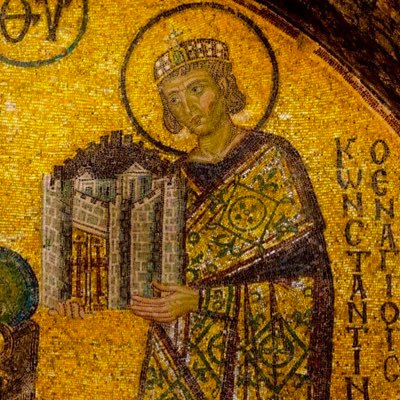Medieval Arab writers stereotyped Byzantine women as promiscuous/immoral - yet also desirable. They are stereotyped in varying ways as “the most shameless,” adulterous, beautiful, uncovered, uncircumcised, & being uncontrolled - but also as attractive and beautiful (a thread)
A giraffe was paraded through the streets of Constantinople during the reign of Constantine IX Monomachos. A clearly curious Michael Attaleiates described the animal: “it is a composite animal, having the spots of a leopard but the size of a camel”
This depiction of an Emperor in procession, seemingly Justinian, is interesting because it seems some kind of mats or carpets were laid down for processions in certain areas, often strewn with some kind of aromatic plants. Though I think the Emperors entourage would be better!
This is one of my favorite works of art set in Byzantine Constantinople. It shows an imperial procession, with the Emperor above all others on horseback. You can see bodyguards, soldiers, clergy burning incense, the spectators along the street, mighty Roman columns in the skyline
“A street in Constantinople” by RAPHTOR on deviantart. This has to be one of my favorite artistic depictions of Byzantine Constantinople. I love the way which the Hagia Sophia looms over the nearby streets of the City. It’s a fun visual aid to imagine the way New Rome once was!
Donald M Nicol: While the Romans looked west “Mongol invasion had caused a great upheaval in Asia. Numerous tribes and families of Turks...had migrated westwards to escape...Seljuq Sultans diverted them into the Byzantine frontier...By 1261 they were numbered in their thousands”
The Byzantines used warships called Dromons, an evolution of the earlier ships of Ancient Rome and Greece. They ditched the rams and used improved construction methods. It was used until end of the 12th century when the navy was neglected. Eventually Italian ships replaced them








